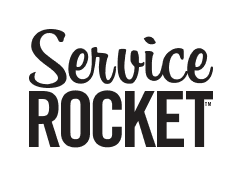PLATFORM SERVICES
APPS ENGINEERING


MEET CUSTOMER
NEEDS FASTER
Deliver the technical functionality and integration your customers need without risk to your roadmap or margins, including apps, add-ons and secondary features.

LEARN More »




In a perfect business world, teams could work together seamlessly, offering support and advice when necessary, and managing efficient meetings to reach organizational goals.
Yet, as organizations strive for a balanced and profitable workplace, teams begin obsessing over ‘collaboration,’ a hero tactic that many believe will take the team to the next level. In general, people like to work together, and multiple minds can solve problems more quickly. However, as technology and tools become more present in Agile environments, collaboration becomes clunky and often, overwhelming.
Fundamentally, collaboration is simply defined as “people working together to reach a common goal.” Cooperation in the workplace is vital to completing projects, shipping products, and maximizing productivity.
Organizations that have traditionally worked in silos — in which each team occupies and manages its own little slice of the company’s work — have greatly benefitted from coordinating systems and tools to promote cross-functional teamwork with ease.
A Stanford study shows that people feel more motivated when they feel like they are part of a team. It also showed that collaborative teams can have higher productivity that those that don’t.
But interactions between team members can easily become convoluted when they spend more time planning and implementing collaboration than actually working toward project completion.
Companies are fluid in nature and internal processes usually change when new products, services, and people within the organization are added to the flow of the work. However, as employees start working on a variety of new projects and initiatives, they spend more time in meetings, answering emails and calls, and getting introduced to new technology to help organize projects and teams.
More importantly, they’re also increasingly pulled away from their core job responsibilities, leaving less time actually creating and producing and negatively impacting their productivity. For many teams, that means more after hours and weekend work during what should be their personal time.
It’s not hard to imagine how this surge of unproductive collaboration can be directly responsible for decreases in employee satisfaction, increases in employee churn, and potential revenue losses.
Collaboration overload can sometimes point to a deeper problem within an organizational structure. The same study that shows higher productivity in collaborative workplaces also points to shared purpose and recognition as being the main motivation in successful teamwork.
Organizations that do well with collaboration are also clear on their expectations of those who work together. This can only come from a corporate culture that encourages open and continual communication. If you sense that your team is headed toward collaboration overload, check out the three steps below that can help you move toward a solution.
Remember the People in the Process
We know that the root of collaboration depends on people working together. Ask yourself, how do you inspire, grow and celebrate your team? Focus on what your team needs (and doesn’t need). How do you value their time?
After this evaluation, remove unnecessary meetings and tools that do not help them reach their original, functional goals. Make sure to include them in the process, building a work plan that work for them and their colleagues, with their professional goals in mind.
Cultivate a Communicative Culture
A key principle of an Agile workplace is to communicate quickly and often. This can only be done if leadership encourages an open corporate culture to discuss what works, what doesn’t, and how to make it better.
After assessing your employees work objectives and creating a plan, be open to continual conversations to make the collaboration process better. Allow your team to develop and maintain necessary tools that they need to collaborate, and then, let them thrive.
Simplify and Measure the Processes
Teams that successfully combat collaboration overload use technology and tools to their advantage. This is your chance to align tools and meetings to shared goals and to define employee roles. Then, use the tools to measure how well these tools and meetings are working for the team.
Asking them to check in during these processes will help you understand where you are losing time and energy. the data you collect will confirm where you can plug in different methods of organization for success.
Most of the time, people love to work together. The premise of teamwork gets compromised when time and energy is strained, and employees are unable to reach their ultimate goals at work. Collaboration overload can affect morale, organizational objectives, and your team’s bottom line. Positively changing your corporate culture is not something you should do alone.

Learn how our comprehensive suite of Atlassian tools and support services can help your team collaborate without compromise.
